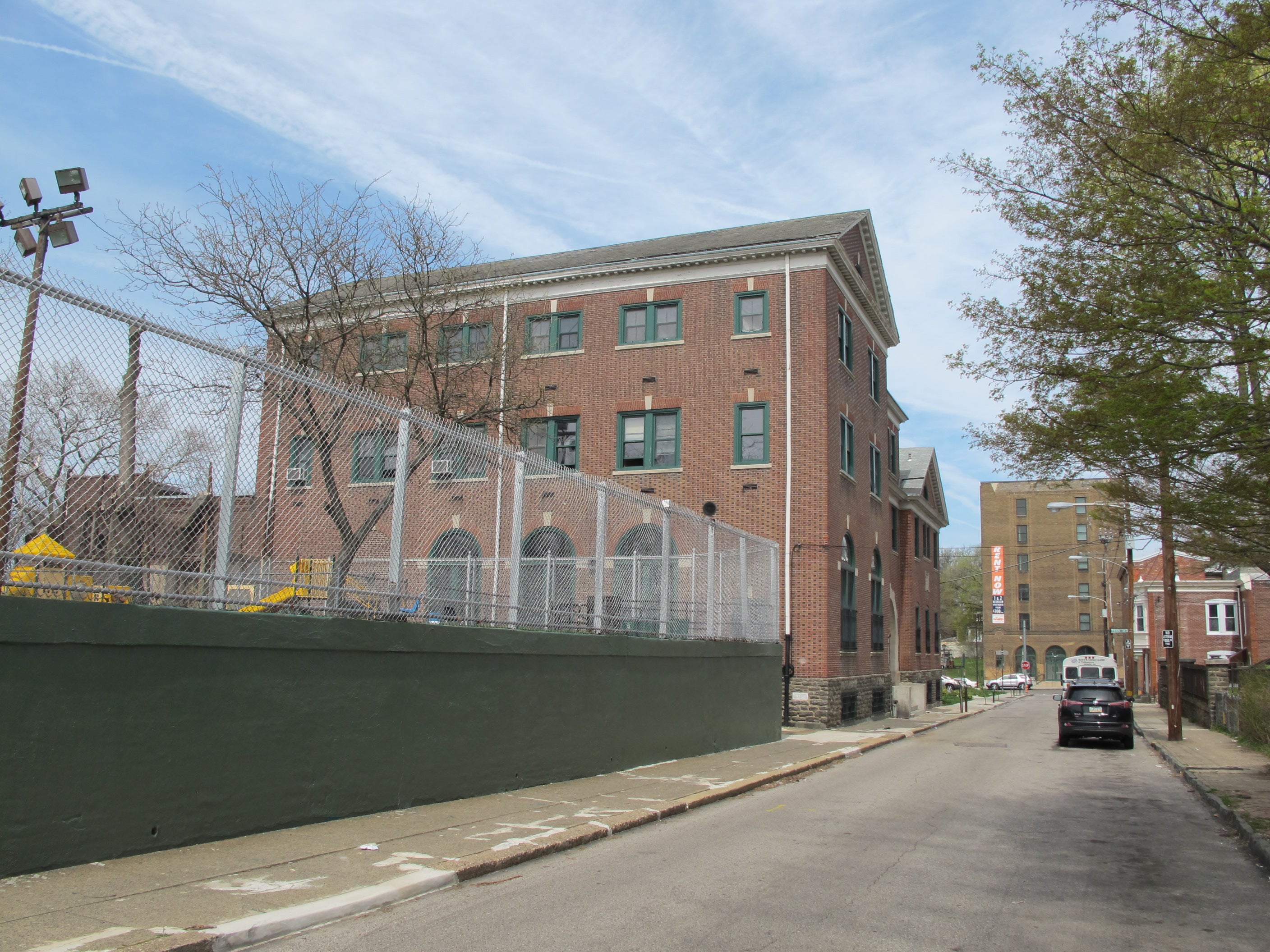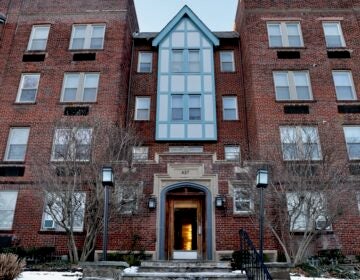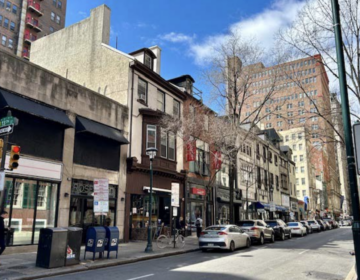In pitched fight over Germantown Boys and Girls Club, Historical Commission postpones decision as both sides dig in

It seemed as though half of Germantown turned out for Friday’s Historical Commission meeting to decide the future of the Boys and Girls Club building on Penn Street.
The room grew so crowded that a cry for the fire marshal went out, and the staff had to open up a spillover room down the hall.
The meeting was the latest flashpoint in the long simmering saga of the Philadelphia Boys and Girls Club’s plans for its Germantown chapter. The organization wishes to demolish its nearly 120-year-old building so it can make way for a larger, state-of-the-art facility featuring a hockey rink.
A variety of neighborhood groups and local preservation activists oppose the destruction of the almost 120-year-old building. Some have pushed for alternative sites, arguing that the location next to the narrow, one-way Penn Street is inappropriate for a project that would quadruple the club’s capacity.
Supporters of the Philadelphia Boys and Girls Club’s plans say that those who oppose the demolition are not motivated by history or neighborly concern but by racism.
Tensions ran hot in the spillover room, where representatives of Enon Tabernacle Baptist Church told assembled teenagers, dressed in Boys and Girls Club gear, to stay calm and ignore the false reasoning of the nomination supporters. The situation, the teenagers were told, feels like the 1960s all over again.
“I’m really upset about the race-baiting,” said Yvonne Hoskins, who is African-American, lives nearby, and supports the preservation of the building. “I don’t think it’s fair or warranted. It doesn’t empower these kids about how to have a civic discourse or how to disagree. We need a better discourse about this whole project.”
Accusations of racial animus have been flying for months now, so by the time the Commission opened the case, both sides were hardened against each other’s arguments.
The commission meeting itself began with Oscar Beisert, the author of the nomination, arguing that preservationist interest in the building isn’t new. While this is the first time the building itself is receiving a nomination to the local register, it was included in the Penn Knox Historic District nomination submitted to the commission back in the late 1990s. (The commission reviewed the nomination years later, but never acted on it.)
The Boys and Girls Club argued that the history of segregation in Germantown marred the current opposition to the project and then began sketching out a hardship claim that the building is too old and outdated to be of further use.
Zoning lawyer Jerry Goodman argued that the building is in a very poor state. (Although it should be noted that the Department of License and Inspection told PlanPhilly that the building is structurally sound and that the damage is limited to a discrete section in its rear.)
Architectural historian George Thomas, who has lately been retained by developers to combat preservationists in terms of architectural integrity and historic significance, pressed the attack on the building contemporary usefulness and the idea that opponents are animated by nefarious impulses.
“The designation of a historical building will make it cost ineffective to do anything good for the children who are already dealing with tragi-comic realties,” said Reverend Dr. Alyn Waller of Enon Tabernacle, whose church supports the club’s demolition proposal. “I’m here because a majority of the people in this room are not going to stand by while old racist mentalities stop us from doing what’s right for these children.”
Councilwoman Cindy Bass spoke in support of the club too (and stayed for the duration of the morning-consuming meeting). Bass described herself as a preservationist, but one who is willing to sacrifice a building when the greater good of her constituents is at stake—as she believes it is in this case.
Bass also stated that she believed the opposition wasn’t rooted in genuine preservationist feeling.
“In the beginning, there was a concern about the population that would use the facility and a desire to not have them attend the facility, to be honest,” said Bass.
Neighborhood groups and preservationists bristled at the flatly stated charges of racism. Haskins noted that while Germantown suffers the ugly scars of segregation there is also a history of integration. (The neighborhood did not, after all, suffer the near total white flight experienced in much of North, West, and now Southwest Philadelphia.)
Voice cracking with emotion, Beisert (who is white) defended the preservation effort against the accusations of racism, reeling off a variety of buildings he’s worked to save in alliance with majority African-American groups.
Beisert countered that the Boys and Girls Club hadn’t done a good job of community outreach, hosting only one meeting between the announcement and the submission of the nomination almost two years later. The second meeting was held in April at Reverend Waller’s church.
“Of course, the Boys and Girls Club deserve a new facility and there is plenty of room on this lot for one, and for this building,” said Beisert. “But when you are spending $20 million you should do basic planning and have multiple meetings with the community. The reality is they’ve had one meeting with the community, and now we are racists?”
After Beisert, a steady stream of witnesses in favor of preserving the building came forward, prompting protests by Goodman who said their side had—out of respect for everyone’s time—encouraged their community supporters to submit written testimony and attend the meeting quietly.
The testimony of the building’s supporters ranged from a measured plea for dialogue and preservation from Emaleigh Doley of Germantown United CDC to more didactic, and meandering, testimonies from residents of the surrounding Penn Knox neighborhood.
Several of these witnesses tried to prove their love of Germantown and its storied built environment by telling the room about properties in the neighborhood they owned and preserved—prompting exasperated groans from the audience.
The testimony of Ted Stones, a committeeman in Germantown’s Wister Woods section, got a better reception.
“This building represents comradery in the neighborhood,” said Stones, who is African-American. “When you walk by, and have participated in it, it’s a symbol. It strengthens the community…. I don’t understand the racial divide that’s been spoken of. These folks are introducing a hockey rink. Now that’s integration.”
At this point, the Commission put a stop to testimony and began debating how they should approach the thorny issue. Commission members Antonio Fiol-Silva and Anuj Gupta dominated the discussion, both agreeing that there were arguments for adding the building to the local register and that the Boys and Girls Club’s expansion was desirable. But admitting that both sides had merit, they preferred to offer time and space to come to a compromise.
It quickly became evident that such a hope might require neutral force compelling both sides to make an arrangement.
Co-CEO of the Boys and Girls Club, Lisabeth Marziello, leapt up to denounce her opponents.
“We are no longer going to be silenced,” said Marziello, who is white. “Our staff have been harassed, we’ve been called racially-slurred names, they’ve called our office and called us [rats]. The people are in the room who have done this!”
Marziello also claimed that local developer Ken Weinstein—who supports the preservation of the building—only supports the nomination because he wants to buy the place. (Marziello said he offered to purchase it, but she declined.) Then she decried her opponents for never having donated to the Boys and Girls Club.
For Marziello and her allies, the campaign to preserve the old building poses a dire threat. The project reportedly needs an additional $10 million to proceed and they argue that a historic designation would impede progress. And already neighborhood groups and preservationists—who claim many supporters both black and white—have been deeply embittered by the accusations of racism.
“I’ve been on the Historical Commission nine years and I’ve never seen so many people so dedicated,” said John Mattioni, a lawyer who sits on the commission. “We should give you the opportunity to bury the hatchet in something other than each other.”
The pastor of Enon Tabernacle offered his church as a venue for hammering out a compromise, but preservation advocates decried the idea because he is so firmly allied with Marziello and her husband Joseph.
Paul Steinke, director of the Preservation Alliance for Greater Philadelphia, suggested that the city’s Commission on Human Relations be asked to step in, as they successfully have in the case of the accusations of rampant racism in the Gayborhood. The layered and divisive case at hand called for just such a delicate touch.
With many more cases on the docket, and the clock disturbingly close to 1:30 p.m. (the meeting started at 9:00 a.m.) the commission decided to continue the case until a special meeting could be held within 45 days.
The decision prompted exasperated cries from both sides. Near neighbor Diane Tull sprang to her feet, saying that she couldn’t make another weekday meeting. She tried to recount her time as a young mother, when she was poor and needed after school care for her son. The Boys and Girls Club was there to help.
“What struck me when I walked was the hominess of the place, even though I was young and didn’t consider old buildings,” recalled Tull.
Commission chair Bob Thomas cut her off, but before the meeting broke up she cried: “Save the building, save Germantown!”
WHYY is your source for fact-based, in-depth journalism and information. As a nonprofit organization, we rely on financial support from readers like you. Please give today.






